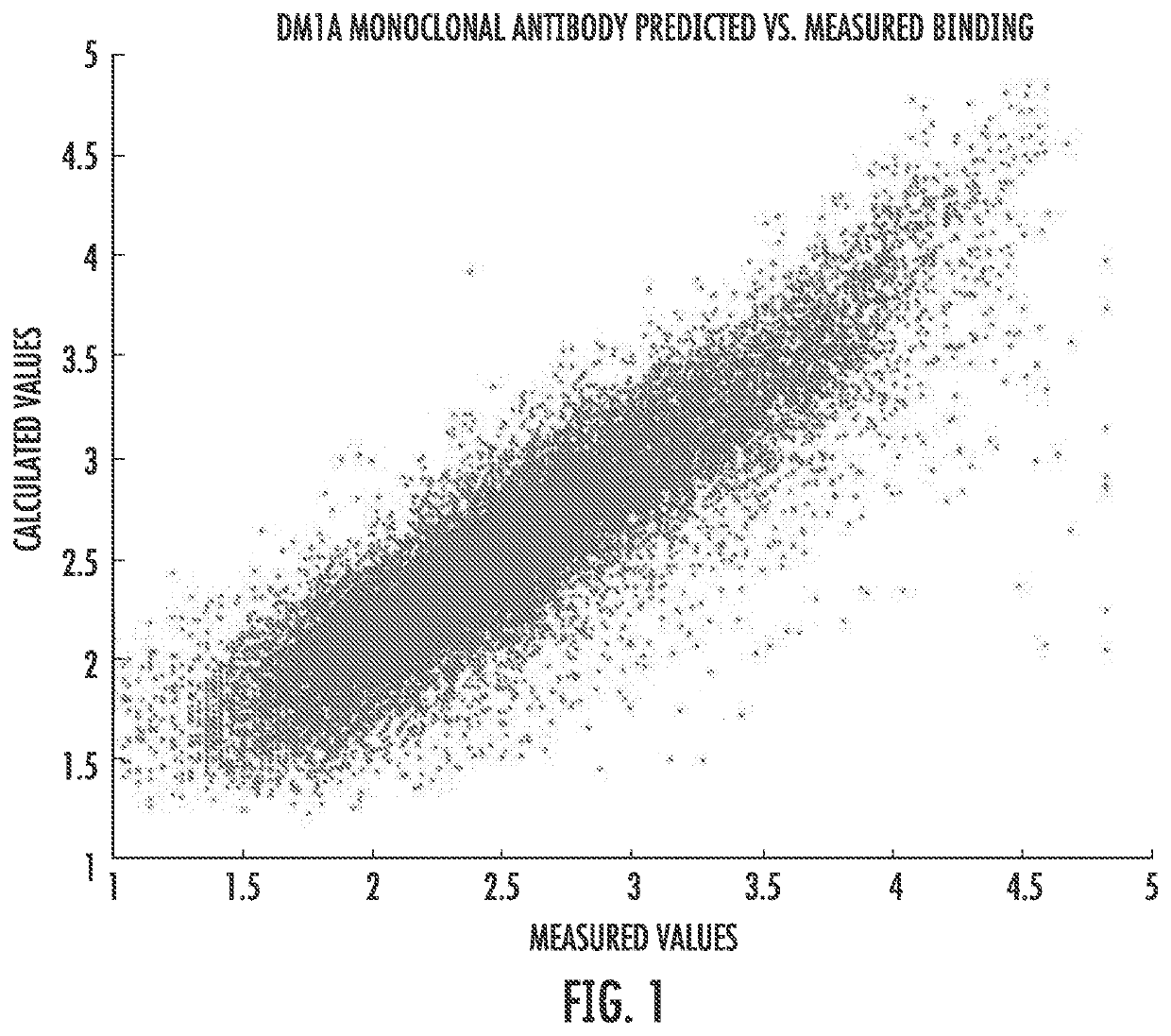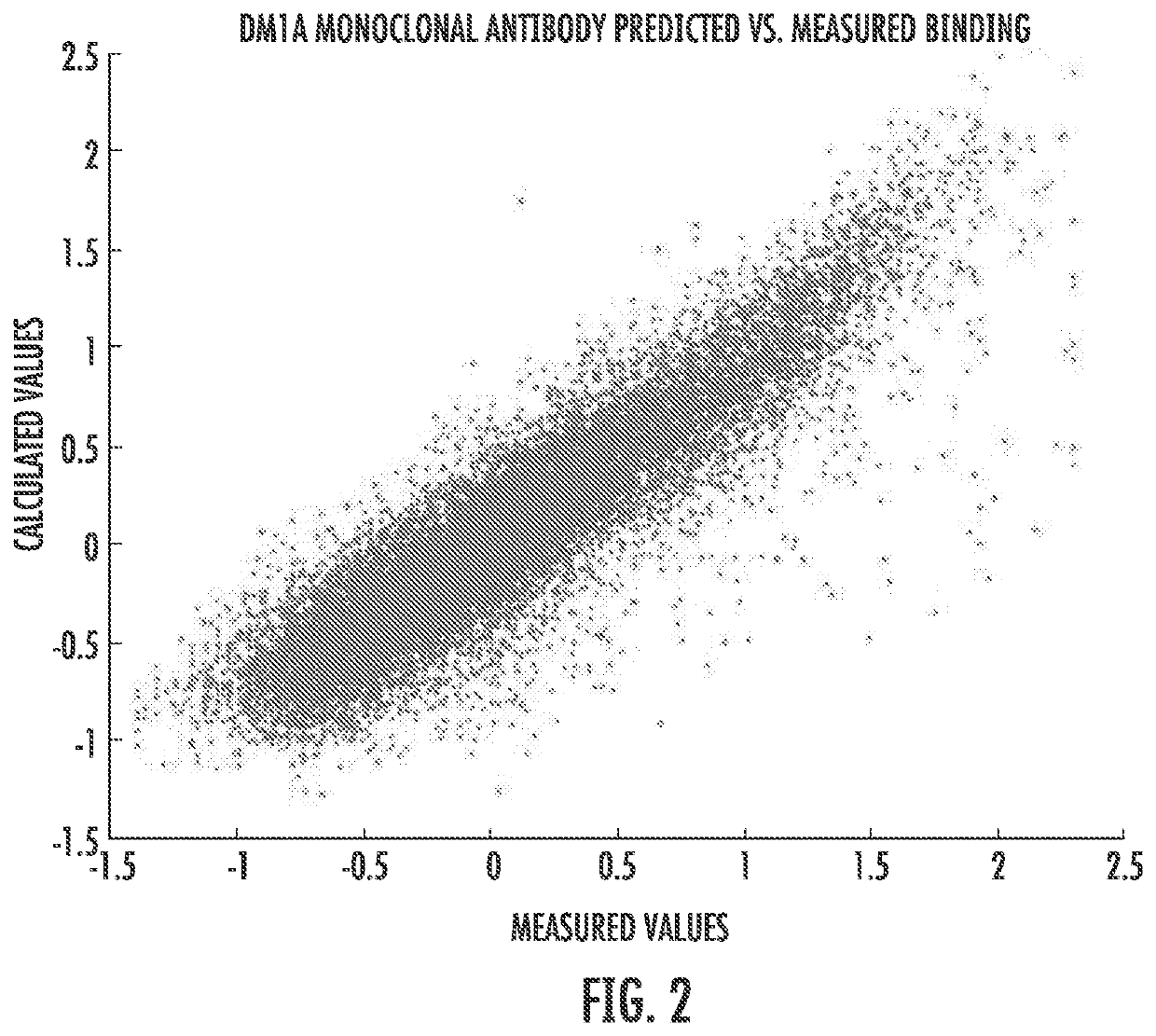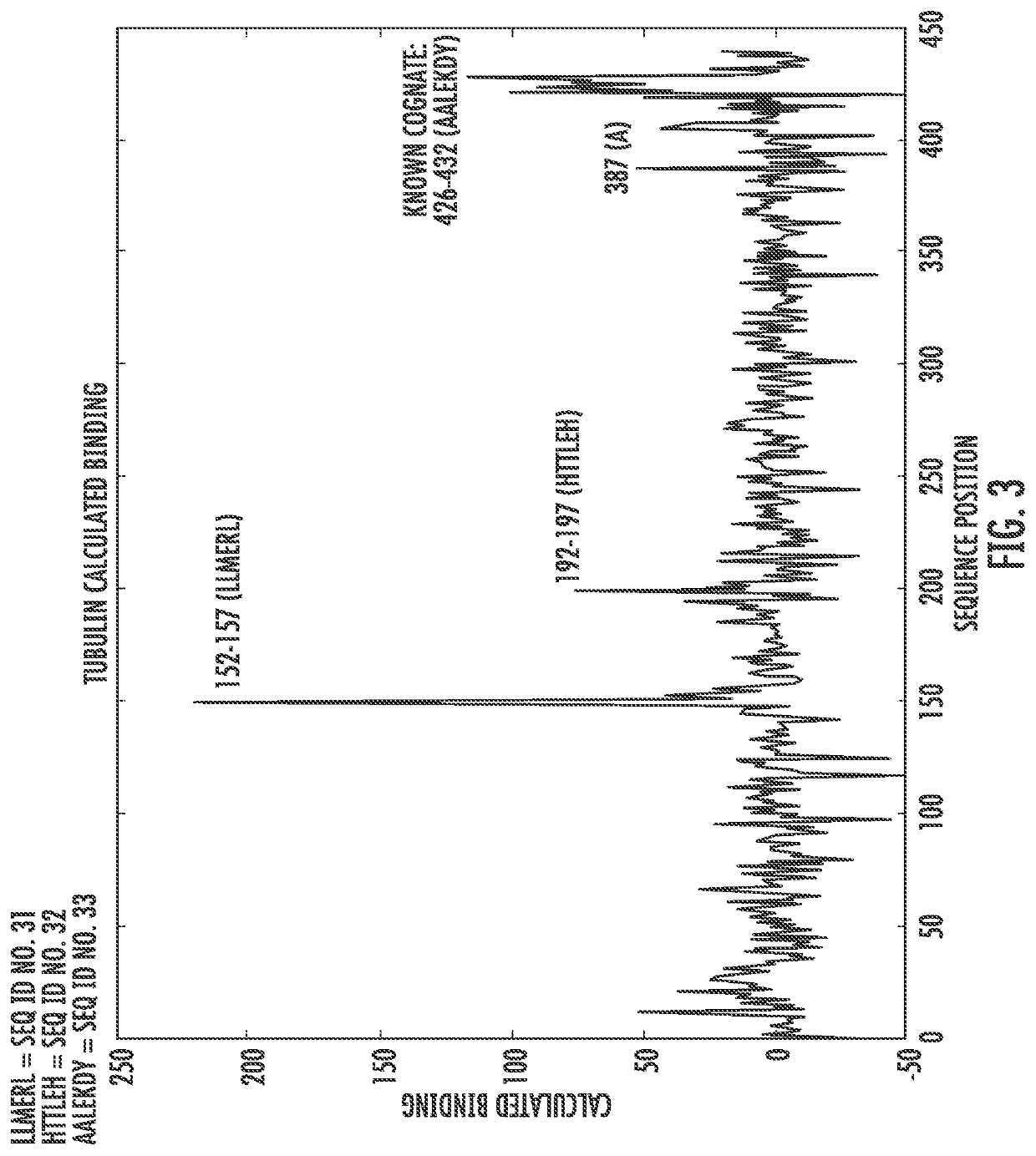Computational Analysis to Predict Molecular Recognition Space of Monoclonal Antibodies Through Random-Sequence Peptide Arrays
- Summary
- Abstract
- Description
- Claims
- Application Information
AI Technical Summary
Benefits of technology
Problems solved by technology
Method used
Image
Examples
example 1
izing a Monoclonal Antibody
[0096]Both equations (3) and (4) were used to a fit of the fluorescence data resulting from binding a labeled molecule of the monoclonal antibody DM1 A (a monoclonal antibody for tubulin frequently used in histological staining of cells) to a peptide array. Commercial arrays (from HealthTell, Inc.) were used for this purpose. They produce arrays of ˜126,000 unique peptides and bind either specific antibodies or serum to the arrays using assays which are standard in that company and essentially the same as those described in the literature (see References 11-14). In brief, the assay involves adjusting the concentration of sample by dilution into a standard buffer and applying this to an array of peptides on a silica surface that has been treated to decrease any background binding. The array is washed, a fluorescently labeled secondary antibody that will bind to the antibody or antibodies in the sample is then applied, excess washed off, and the array is dri...
example 2
g the Antigen of an Isolated Antibody from a Group of Other Proteins
[0102]It is also possible to use fits such as the one above to identify the antigen of a specific antibody among a list of possible antigens. FIG. 5 shows the binding predicted by a fit using equation 4 of DMA1 binding to the alpha tubulin gene and 100 similarly sized human genes. Note that the sequences of the proteins are shown as contiguous and just numbered from the beginning to the end. Alpha tubulin is predicted to bind most strongly of all proteins sampled.
[0103]However, there are a number of other proteins that are not much weaker than alpha tubulin and if larger groups of proteins are considered, there could easily by stronger binding proteins. To better discriminate antigen binding from binding to less specific targets, one can take advantage of the biology of specific antibody binding. In particular, one generally might expect two characteristics of a true epitope. First, our algorithm considers binding o...
example 3
ng the Epitopes that Distinguish Clinically Relevant Infections
[0107]Another application of computational representations of binding is in identifying the antigens involved in disease responses. This is important, both in vaccine production and in the identification of potential drug targets. Shown in FIG. 8 is a fit of the log of the binding values from an average of 44 patients infected with Hepatitis B. The Pearson correlation coefficient between the log of the measured and log of the calculated values is about 0.89. FIG. 9 shows a similar fit of data in the linear form (no log), resulting in a Pearson correlation coefficient of 0.78 between measured and calculated values. The maps and analysis that followed used the linear fits as these emphasis the high binding values. FIG. 10 shows a map of the calculated binding for tiled sequences that make up the Hepatitis B proteome. One can see that there is a region of unusually strong binding in the so-called S-antigen, which is an anti...
PUM
 Login to View More
Login to View More Abstract
Description
Claims
Application Information
 Login to View More
Login to View More - R&D
- Intellectual Property
- Life Sciences
- Materials
- Tech Scout
- Unparalleled Data Quality
- Higher Quality Content
- 60% Fewer Hallucinations
Browse by: Latest US Patents, China's latest patents, Technical Efficacy Thesaurus, Application Domain, Technology Topic, Popular Technical Reports.
© 2025 PatSnap. All rights reserved.Legal|Privacy policy|Modern Slavery Act Transparency Statement|Sitemap|About US| Contact US: help@patsnap.com



